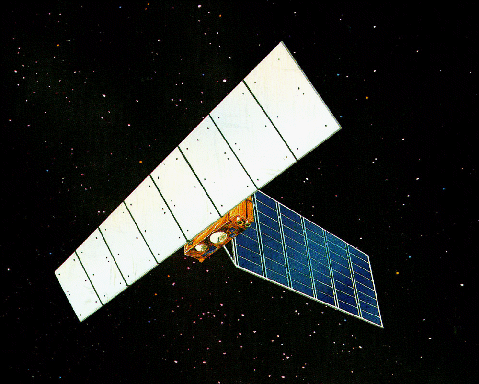JERS-1
he Japan Earth Resources Satellite (JERS-1 aka Fuyo 1) was launched in
February, 1992, into a 570-km, sun-synchronous
orbit. The 12-year effort to field the moderate resolution SAR and
multi-spectral payload was a joint venture by NASDA,
which was responsible for the spacecraft, by the Ministry of International
Trade and Industry, which developed the payload
instruments, and by the Science and Technology Agency. Mitsubishi Electric
was the prime contractor aided by Toshiba,
Nippon Electric, and the Japanese Resources Observation Systems Organization.
The 1,340 kg JERS-1 consists of a net rectangular bus (0.9 m by 1.8
m by 3.2 m) with a single 2-kW solar array (3.5 m by
7.0 m) and an eight-segmented SAR antenna (2.4 m by 11.9 m when deployed).
The spacecraft is 3-axis stabilized with a
payload of nearly 500 kg and a design life of two years. Frequent orbital
adjustments are required to maintain the 44-day
repeating groundtrack.


